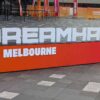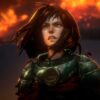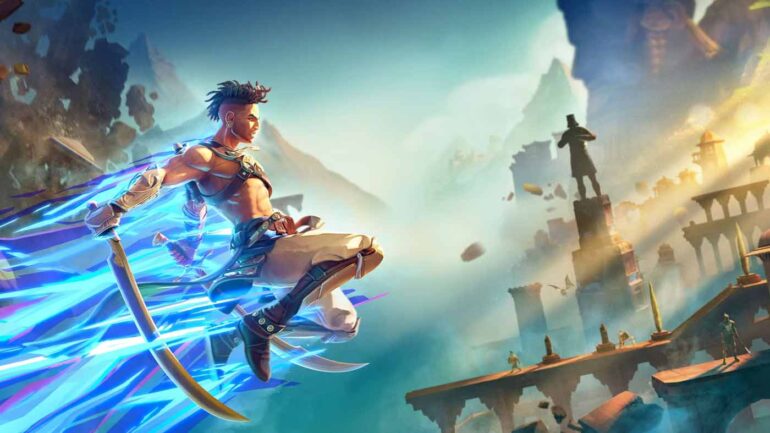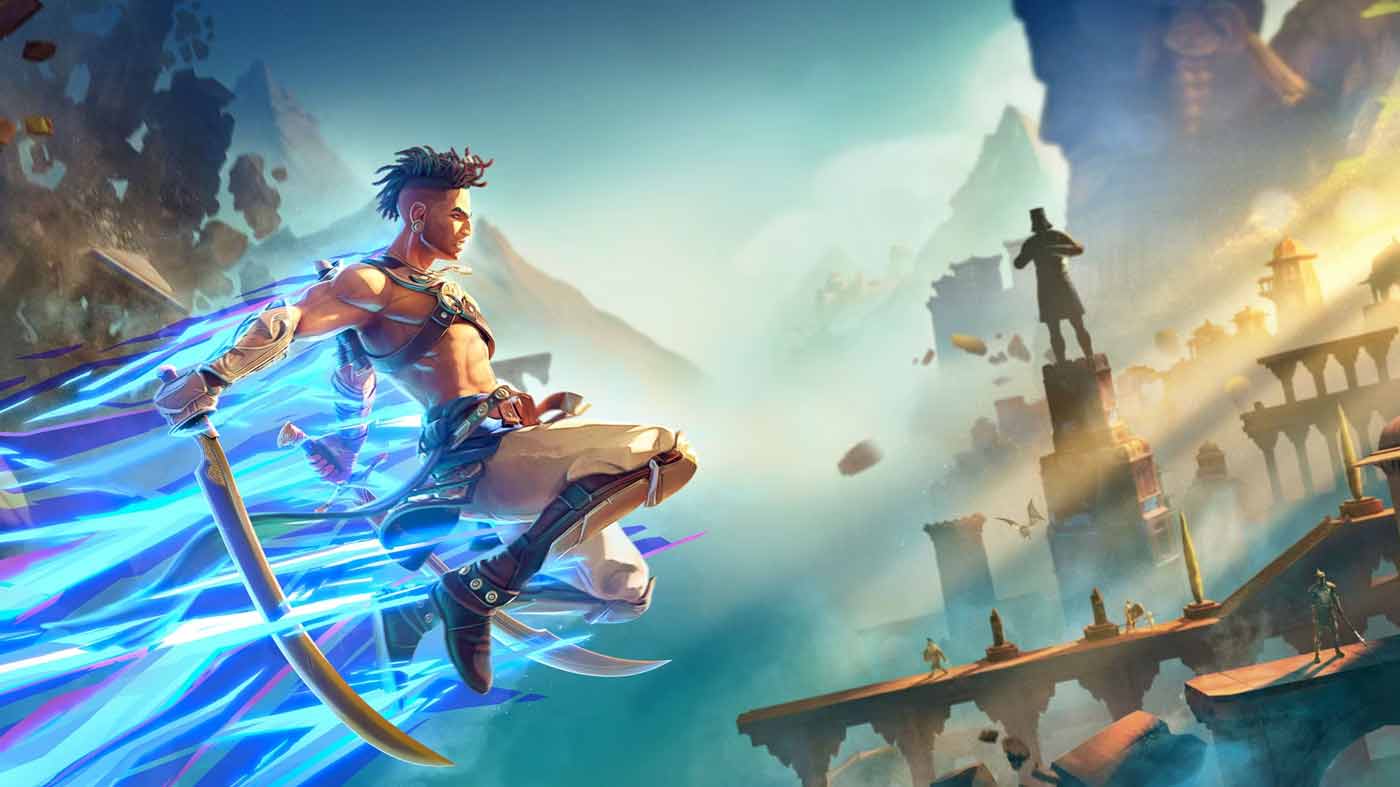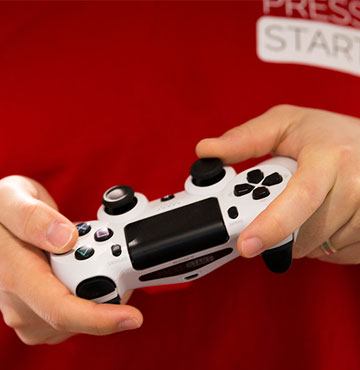It takes a lot to get me interested in an exploration-focused platform game (or Metroidvania, if you prefer). I’ve grown weary of games billing themselves as Metroid-likes that just don’t really get what made the progenitors of the genre great. What a pleasant surprise it was then to have Prince of Persia: The Lost Crown come across my desk.
Not only does it have the considered world design and structure that a game of this genre needs to succeed, it adds fluid movement and combat, well-considered accessibility options and some genuine innovation to the mix, resulting in one of my favourite entries to the genre in a long time.
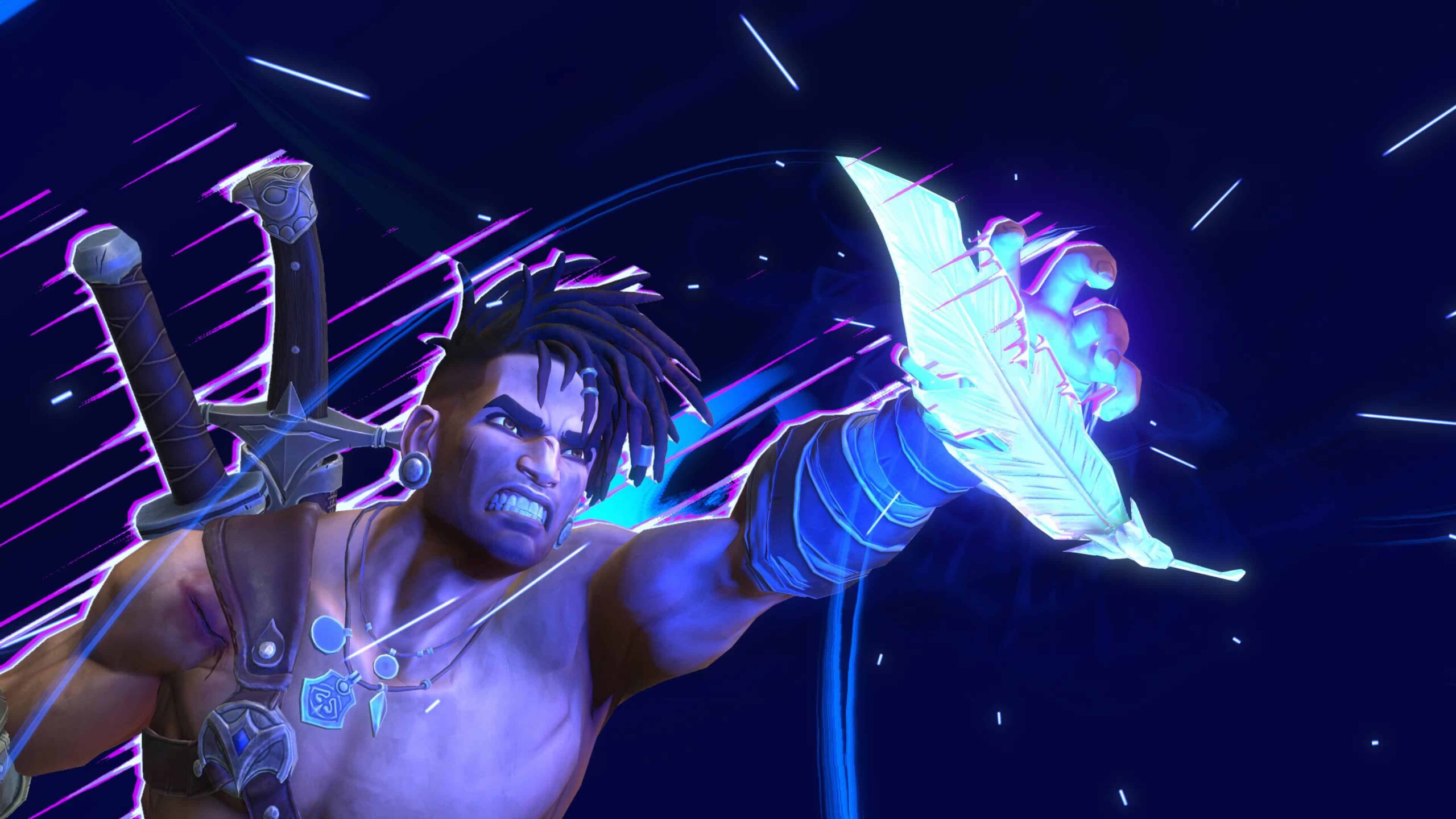
The Lost Crown has you play as Persian warrior Sargon. After a plot to disrupt the kingdom results in a kidnapping, Sargon follows the perpetrator to the mysterious Mount Qaf, a once-beautiful place that has been taken over by a curse. Alongside a squad of immortal warriors, you’re set on a quest to recover the kidnapped prince and ensure the betrayer comes to justice, with plenty of compelling twists and turns along the way.
Traversing the world in The Lost Crown feels fantastic. Returning to Prince’s side scrolling roots, The Lost Crown presents a fairly huge world to explore filled with some pretty devious puzzles and secret passages. Sargon is an effortless and agile character able to move his way around the world with ease and grace.
Your repertoire of traversal abilities grows gradually over the course of the game, but even early on just the act of running and jumping makes moving around the world as Sargon compelling. When you add in air dashes, double jumps and the like you feel like you can get just about anywhere with smart use of his abilities.
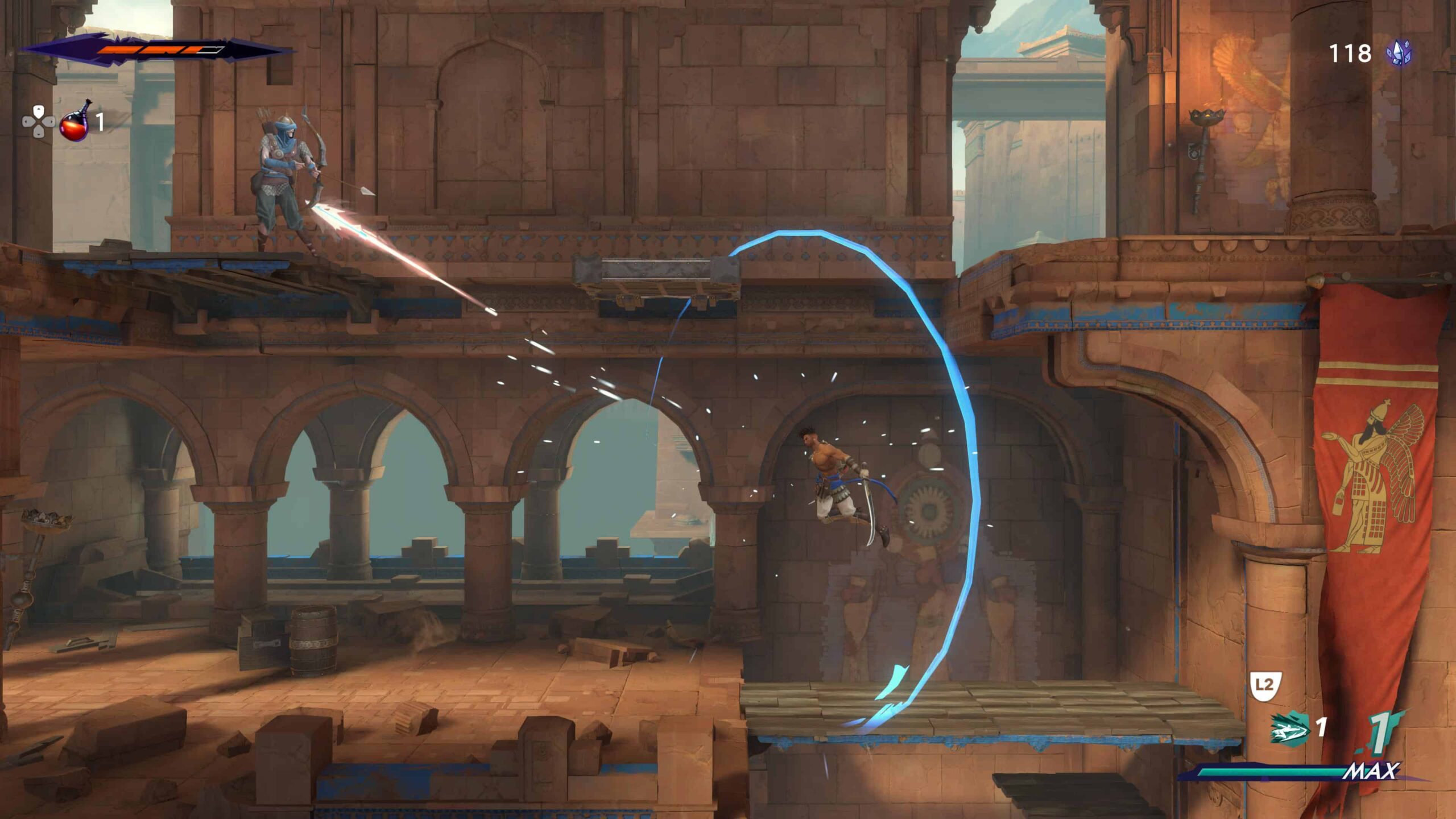
You’ll absolutely need to be smart with those abilities to get past some of the fiendish platforming challenges you’ll be presented with, as well. I was reminded of 2010’s Super Meat Boy at points – demanding platforming situations, lots of sliding, wall jumping and air manoeuvring, one hit deaths if you touch the wrong surface, and near-instant respawns if you biff it.
Between the design of the challenges and the sublime way Sargon moves about the environment, I loved pitting myself against these sections and getting a little closer to success each time. The most demanding of these challenges are for extra collectibles, though there are still some tricky segments along the main story path of the game that will test players.
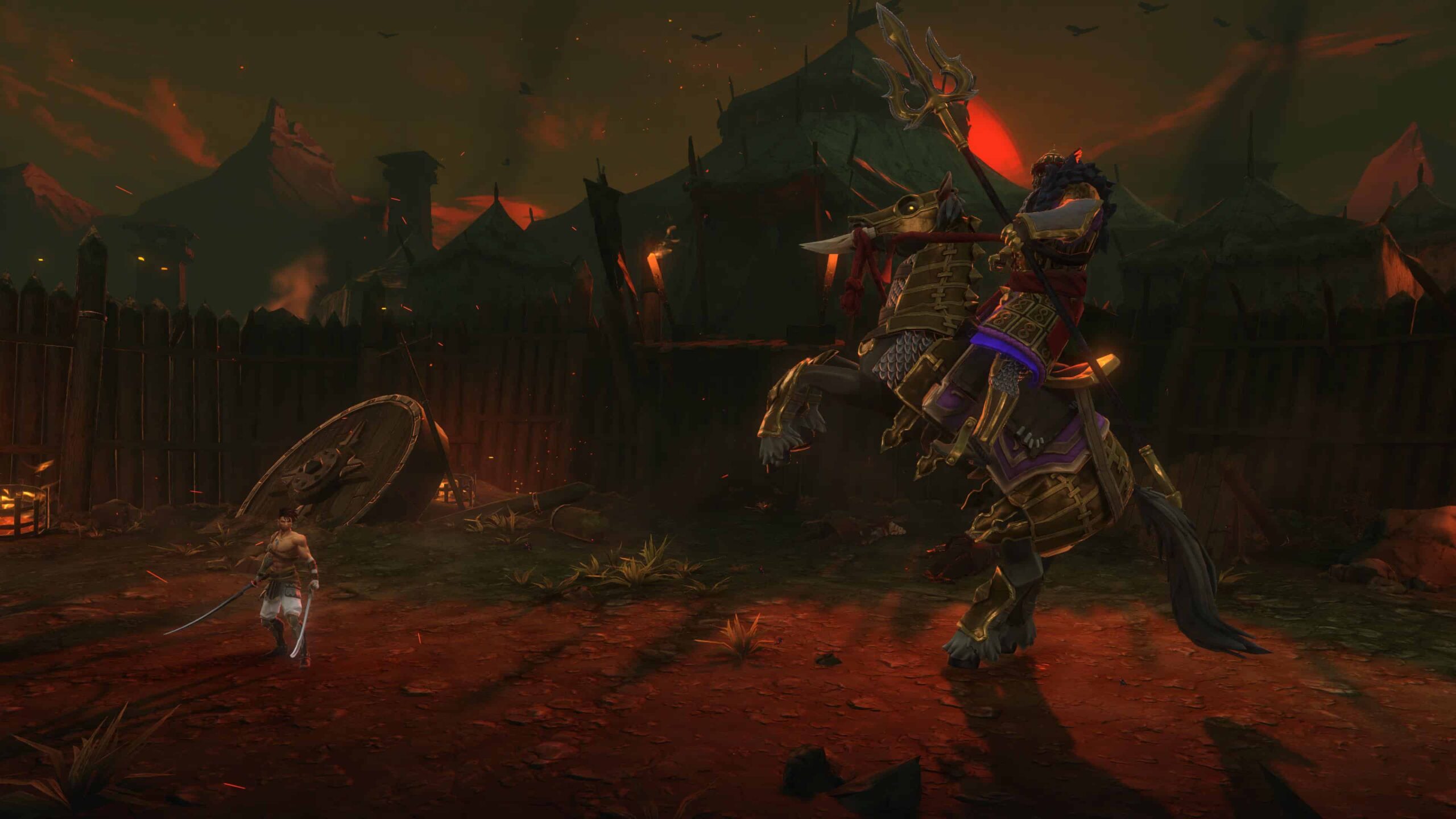
While I found the challenges utterly rewarding, The Lost Crown has some features up its sleeve to make sure you won’t have to miss out if they’re not your cup of tea. One of the game’s suite of accessibility and difficulty options allows you to skip these sections entirely – turn on the relevant setting and portals will appear at the start and end of challenging platforming sections that are essential to progress in the story. Activate and enter one of these portals and you’ll be whisked straight to the end without penalty.
If you’re like me and enjoy the challenge for its own sake then these portals won’t get in your way, but they’re a fantastic option if you want to engage with everything else great about the game. I also found them super convenient while doing some post-game exploring.
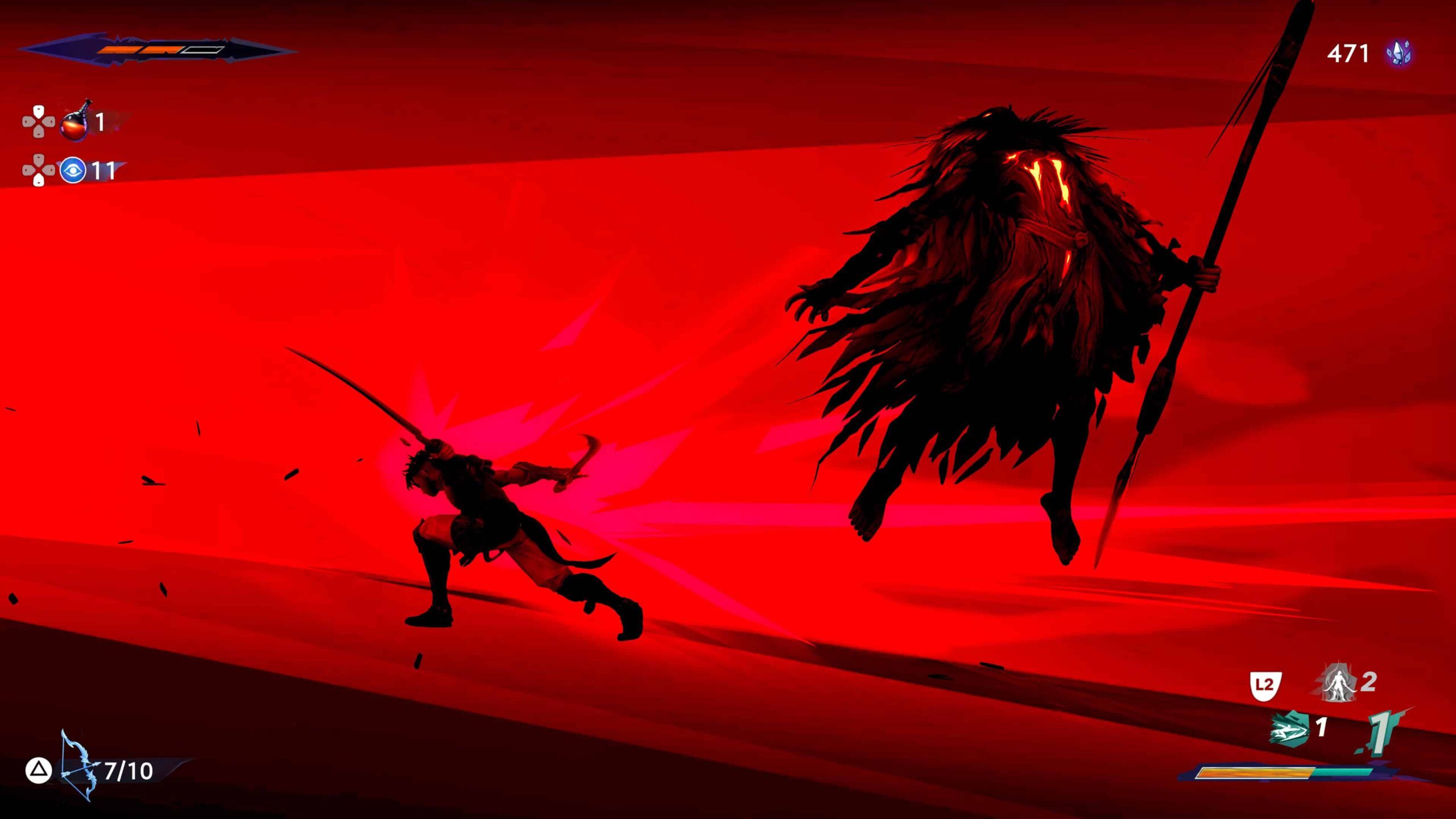
Continuing in this theme, The Lost Crown has several other options to tailor the experience to your preference. There are normal and ‘Guided’ modes for the map screen. Normal just shows areas you’ve seen, while guided adds icons to indicate story-progression related pathways that you’ve come across and shows whether they are open or closed based on the abilities you have.
I started on Normal mode, but when I gave Guided mode a try I kept it on for the rest of the game. For the times you remember coming across an impassable section but can’t quite remember where it was it’s a lifesaver and in a way that I feel didn’t stop me feeling like I was exploring on my own terms.
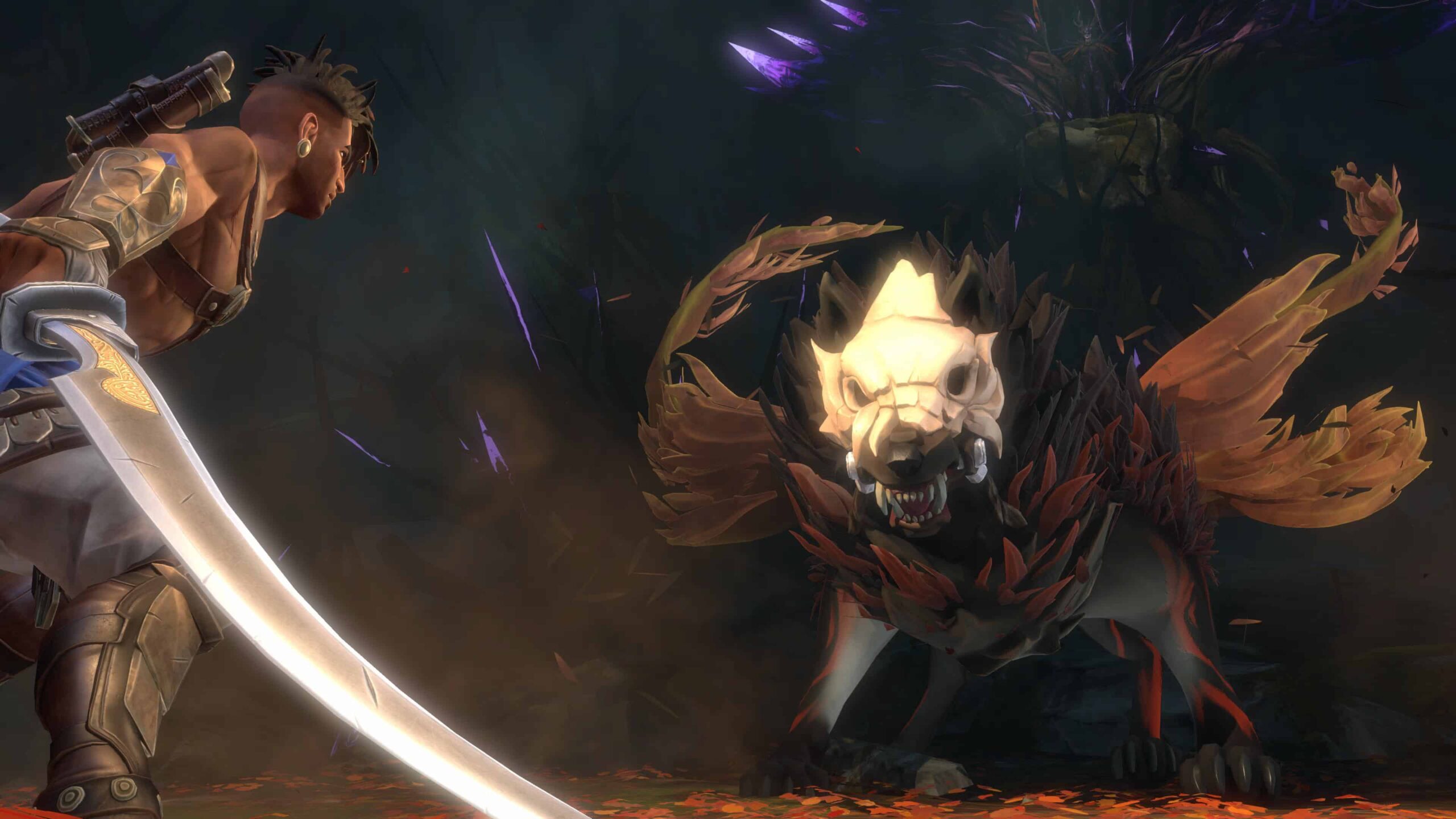
There’s one exploration-related innovation in The Lost Crown that I immediately wish every other game of its type had – the Memory Shard feature. When you come across something in the world that seems curious but you can’t deal with yet, you can press down on the d-pad to instantly take a screenshot. The game then marks your location on your map and pins the image to it. This way when you come into new abilities later on you can scan your own map and the screenshots you’ve taken and know exactly where it was you saw that breakable wall or strange grapple point. It’s a simple but brilliant feature that I’ll miss in any game without it.
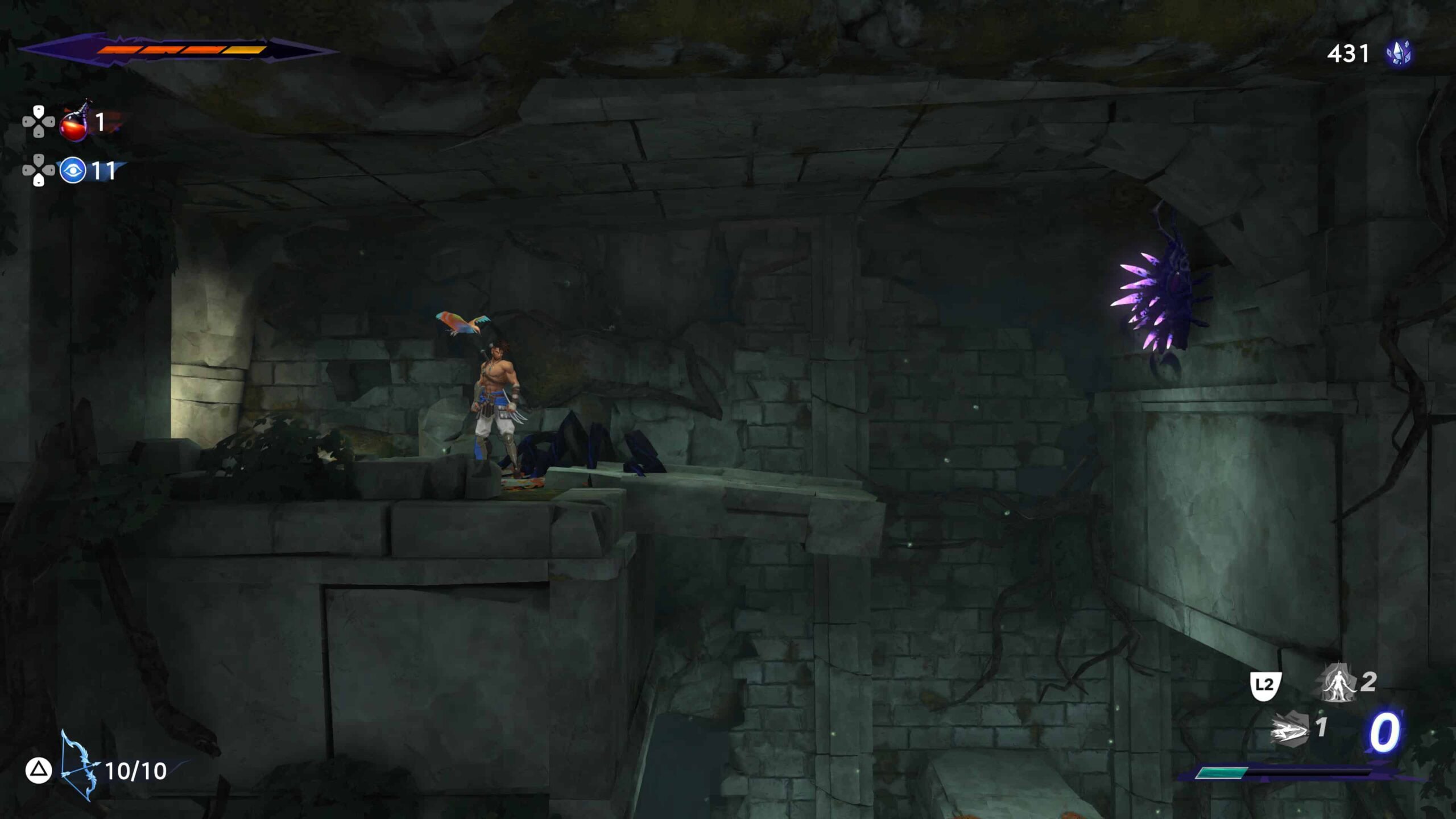
As someone who enjoys character action games with engaging combat, I was surprised to see The Lost Crown incorporate some elements of that genre into its own combat. While it’s no Devil May Cry, you’re encouraged to knock enemies off balance, to launch them into the air and follow up with a flurry of air attacks and to use all of your movement options to get the upper hand in battle.
This makes regular enemies enjoyable to fight, and really comes into its own with bosses. Bosses, at least on the standard difficulty mode I played on, were delightfully challenging. They demand split second reactions and a good understanding of your movement options to avoid damage and deal it back in return. Like a good boss in Metroid Dread they would take me a few attempts, but the challenge usually felt fair and engaging in a way that kept me coming back after each defeat.
Not everyone wants this kind of gameplay though, so The Lost Crown’s myriad difficulty options again let you tailor the game to your liking. There are several built in presets with good explanations of how they affect the game, as well as a fully custom difficulty option that lets you set sliders to precisely adjust aspects of the game.
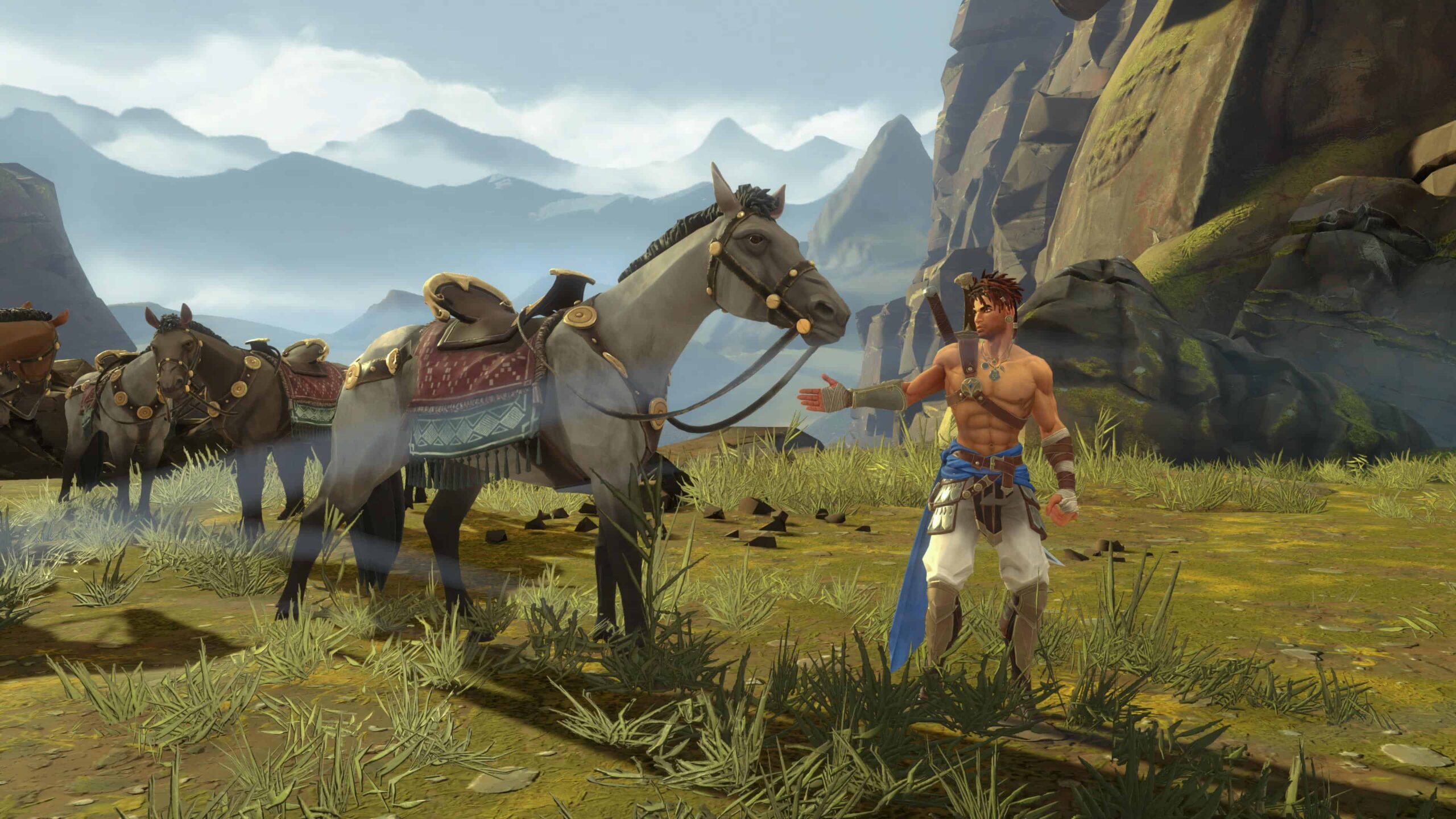
Exploring Mount Qaf no matter what difficulty options you choose is compelling. As well as the aforementioned platforming challenges you’ll find plenty of puzzles that will test your grey matter and secret entrances you can uncover with subtle environmental cues.
I really missed having an on-screen map, though. It would have been so much easier to confirm I’d taken the right passage, or confirm I’m exploring a new area if I could see a little portion of the map somewhere on screen, Metroid style. As it is, I had to flip to the map screen often to make sure I hadn’t gone off course. It’s a minor annoyance, but one that did bother me somewhat through most of my play time.
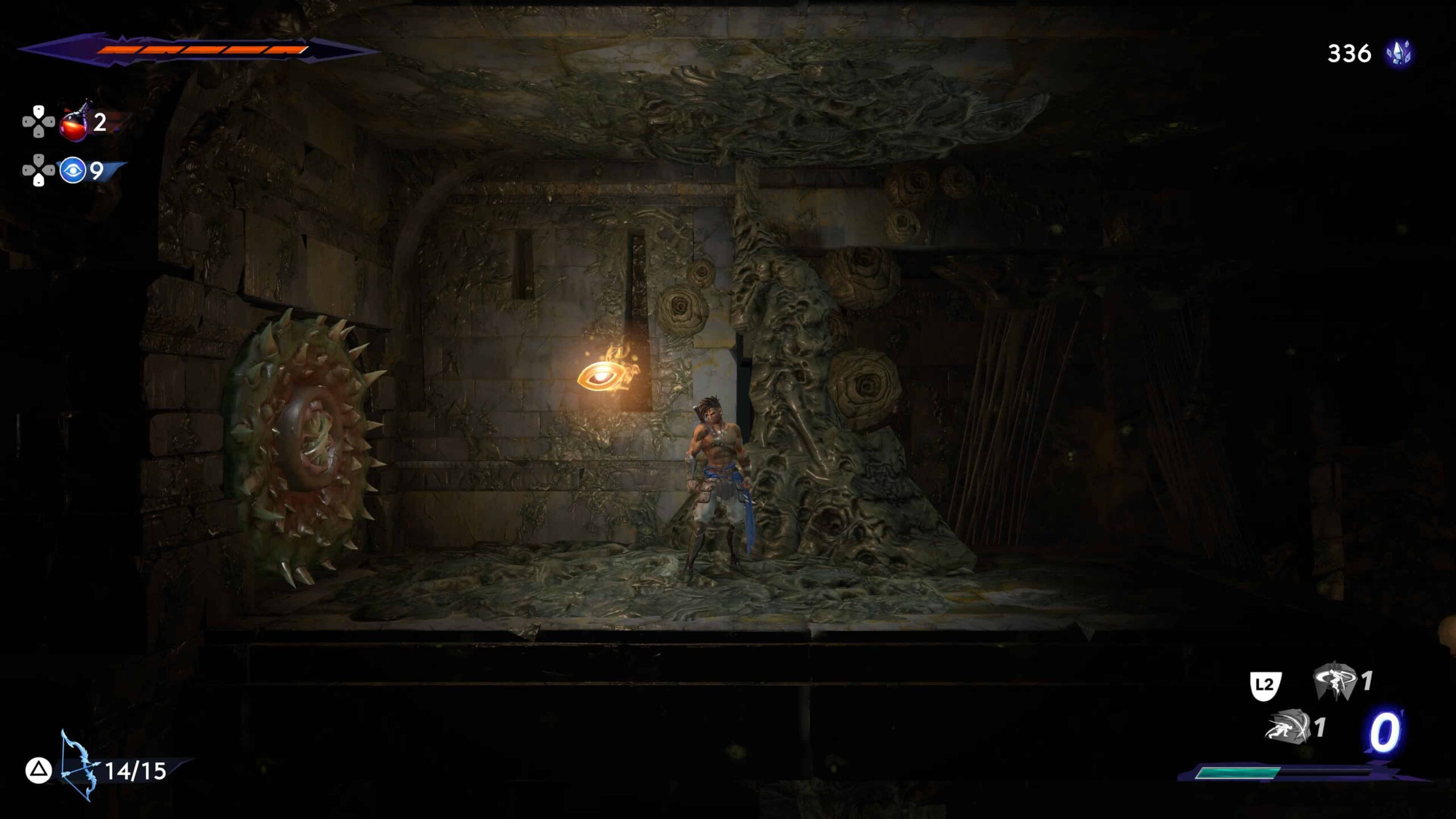
The Lost Crown’s visual style has ups and downs. It has a kind of stylised, simple, not-quite-cartoon, not quite clay sort of look that didn’t particularly light my fire – though there are some awesome animations and visual flairs during boss battles that I loved. Performance on PS5 where I played was close to flawless, though. I don’t have the means to test but Ubisoft claims the game runs at 2160p and 120 frames per second, and as someone pretty sensitive to frame rate drops I noticed nothing but buttery smoothness.
